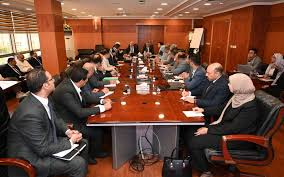Egypt’s Prime Minister Mostafa Madbouly has defended his government’s decision to offer unused state-owned lands for investment in partnership with the private sector, insisting that the initiative is about unlocking economic value rather than selling off national assets.
Speaking during the weekly cabinet meeting on Wednesday, Madbouly addressed criticism that surfaced after recent discussions on the redevelopment of key locations such as Khedivial Cairo, Azbakeya, the Fustat Hills, and the Nile Corniche. He said the government was taken aback by claims that these efforts were a way of “selling state property.”
“We were surprised by those who said, ‘You are also going to sell state assets!’” the prime minister remarked. “The conversation began as if the state was wasting its unused assets. We have properties that are abandoned or not optimally utilised—such as land on the Nile being used as a warehouse or a public transport garage.”
According to Madbouly, the government has already initiated a comprehensive inventory and valuation of such properties. The purpose is to identify the most viable investment options that could involve tourism, hospitality, or real estate developments in partnership with private investors. He stressed that these lands could be worth tens of billions of Egyptian pounds if put to productive use.
The prime minister pushed back against the argument that such projects amount to privatisation or asset disposal. “The state used to be criticised for interfering in business rather than giving opportunities to the private sector. Now, when we offer investment opportunities to the private sector, we are told we are squandering assets. We can’t leave properties idle without benefiting from them.”
Madbouly also highlighted the broader economic benefits of developing unused land. He explained that projects create an operational system, generate jobs, add economic value, and produce tax revenues for the government. This, he said, makes the initiative far more complex than a simple sale or partnership arrangement.
His comments came shortly after chairing a high-level meeting on Monday to explore investment opportunities along vacant plots of the Nile Corniche in several districts of Cairo. At that meeting, he directed officials to fast-track the inventory and valuation process so the properties could be packaged and offered as ready-to-develop investment projects.
The prime minister said the government’s goal is to maximise returns from idle state-owned assets, thereby strengthening the economy through effective asset management and collaboration with private entities.
He added that redevelopment plans for areas like Khedivial Cairo are not just about economic gain but also about urban renewal and cultural preservation. “Our approach is integrated, involving complete replanning while preserving the historical character of these areas,” Madbouly said. “It is not permissible to demolish them or change their identity.”
To achieve this, the government is studying international examples of urban regeneration, particularly how historic sites have been successfully repurposed abroad. He suggested that parts of Cairo could be transformed into pedestrian-only zones, creating public promenades that enhance the city’s appeal for residents and visitors alike.
The prime minister’s stance reflects Egypt’s broader push to attract private sector investment as part of its economic reform programme. By offering prime but underutilised land to investors, the government aims to stimulate economic activity, modernise urban spaces, and boost tourism potential.
Analysts say the challenge will be ensuring transparency and fairness in how investment opportunities are awarded, as well as maintaining public trust by balancing development with heritage preservation. However, supporters of the policy argue that the move is a pragmatic way to generate revenue, create jobs, and prevent valuable land from lying fallow in a time of economic need.
With plans already under review for several prime locations, the government is expected to announce further details on how the land will be offered, the conditions for investors, and the timelines for project implementation in the coming months.
